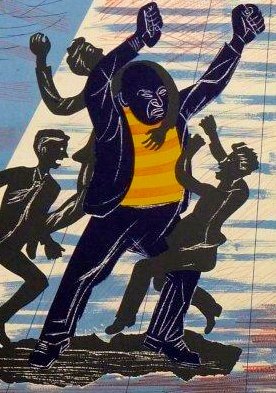


RAISE THE HUE AND CRY FREE
Everyone except those who work for military or any intelligence agency may use our free online dictionary services. We reserve the right to change this policy any time we decide to. It is not permitted to save or chache queries or any query results from our Website on any electronic and non electronic device or System. It included the requirement to raise ‘hue and cry’, in effect, a form of collective responsibility, placing the onus on the entire local community to raise the alarm in the face of criminal activity. We request you to send us your name, email-adress and your Project URL if you are linking to us or if you are using our Webpage as Iframe. This was the main piece of legislation that regulated policing in England until the 19th century. It was the responsibility of Kindreds ( Cenedl ) for the conduct of the members.Copyright © 2002 All Rights Reserved.Īny Website can link to us or use our webpage as Iframe but only if it is non-commercial, non-military, non-intellligence, non-violent and non-profit Website. The Laws of Hywel Dda put responsibility for enforcing law collectively. The families of murder victims, for example, would be compensated financially. The laws set out a system of compensation for victims of various crimes. However, the Laws of Hywel Dda continued to be used for civil cases until 1540. In 1284 the Statute of Rhuddlan enforced the use of English law for all criminal cases in Wales. After the Norman Conquest, the Laws of Hywel Dda continued as the basis of the Welsh legal system. He also wrote Wales’ first uniform legal system. He unified most of Wales under his leadership. Hywel Dda was a Welsh ruler in the 10th century. Each village or manor still had a manor court, held by the local lord or landowner for minor cases. JPs were usually the main local landowners. County courts were set up with Justices of the Peace (JPs), also known as Magistrates, hearing cases. Royal judges travelled around the country dealing with serious cases. It was the duty of any person aggrieved, or discovering a felony, to raise the hue and cry, 1 and his neighbours were bound to. HUE AND CRY, a phrase employed in English law to signify the old common law process of pursuing a criminal with horn and voice. The role was unpaid and the Constable would lead the hue and cry as well as have other responsibilities. See also Hue and cry on Wikipedia and our 1911 Encyclopædia Britannica disclaimer. These would be leading villagers who would take the role for one year. They enquired into violent or suspicious deaths, with the support of a jury of local people.Īfter 1250, villages started to appoint constables in each village to monitor law and order. hue and cry And why also, if they have such confidence in us, do they raise such a hue and cry when we pass near their nests He would be most anxious to get. The Sheriff would also hold a criminal after capture in the local gaol.Ĭounty Coroners were appointed after 1190. A Sheriff also investigated major crimes, again with the help of a jury of local people who would swear an oath to say who they believed had committed the crime. All men over 15 could be forced to join a posse by the Sheriff.Ī posse would also deal with any local rioting. If villagers failed to catch a criminal, the Sheriff would form a posse comitatus to continue to chase the criminal.

They were appointed by the King and were the chief legal officer in the Middle Ages. If one member of the ten broke the law, it was the responsibility of the others to catch the culprit and take him to court.ĭuring the medieval period, there had been some developments in this system.Ĭounty Sheriffs were appointed to oversee law and order in a county.

Tithings - adult men were put into groups of ten.If villagers failed to join then the village could be fined. Raising the hue and cry - basically, calling on fellow villagers to chase the criminal.It was expected that communities would be responsible for policing and combatting crime. It was the responsibility of the victim and local community to find the criminal themselves. No proper police force existed before the 16th century. Enforcing law and order before the 16th century Policing before 1500


 0 kommentar(er)
0 kommentar(er)
